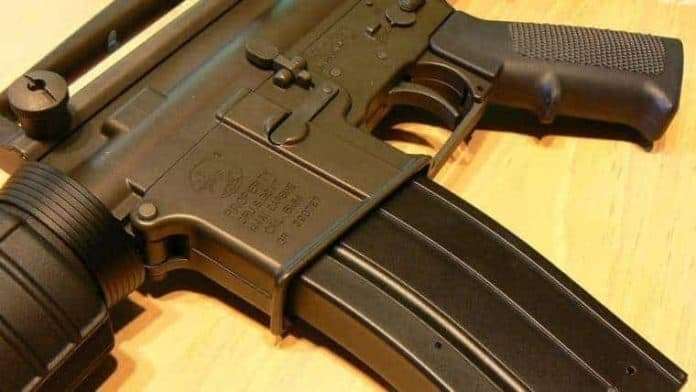Last week’s tragic school shooting in Parkland, Florida once again points up the need to better control the distribution of weapons in America– especially those whose only purpose is the mass killings of other human beings. The number of high school students killed sent shock waves throughout the nation, and once again the debate over gun control is starting up.
Once again the shooter is another American teenager– who may or may not have serious mental health issues. Not that mental health is the main issue here. As HuffPost’s Arthur Gallant points out, the Treatment Advocacy Center says “[m]ost acts of violence are committed by individuals who are not mentally ill, [and] no evidence suggests that people with serious mental illness receiving effective treatment are more dangerous than individuals in the general population.”
Mass shootings are always a contentious issue. The histrionics that follow are always heartfelt, and passions run hot on both sides. What complicates the gun control argument is the 2nd Amendment– and gun lobby money.
In the 2016 election, the NRA spent nearly $32 million to protect its interests: $11.5 million in support of Trump, and almost $20 million to oppose Hillary Clinton.
Money is also spread among Senators and members of the House. Over time, the amounts spent with these lawmakers add up. Money explains why it is that despite the tragedy of gun violence– the number of victims or their ages– when gun money recipients are asked to break step with the gun lobby and jeopardize their contributions, they rarely do.
The Center for Responsive Politics is “a premier research group tracking money in US politics and its effect on elections and public policy.” It produces a wealth of information on what the NRA spends with American lawmakers in advancing its cause. The top 5 Senators who have received the most money from the NRA are
- John McCain (R, AZ) – $7.74 million
- Richard Burr (R, NC) – $6.99 million
- Roy Blunt (R, MO) – $4.55 million
- Thom Tillis (R, NC) – $4.42 million
- Cory Gardner (R, CO) – $3.88 million
Top 5 Representatives who have received the most money from the NRA are
- French Hill (R, AR) – $1.09 million
- Ken Buck (R, CO) – $800,544
- David Young (R, IA) – $707,662
- Mike Simpson, (R, ID) – $385,731
- Greg Gianforte (R, MT) – $344,630
So why do some lawmakers get vastly more lobby money than others? The Center for Responsive Politics explains:
In the halls of the Capitol in Washington, D.C., most of the nitty-gritty work of crafting new laws gets done not on the floor of the House or Senate, but at the committee level. No important bill is considered without first winning approval from at least one committee, and often several. Those panels are thus enormously important to the industries they oversee. Because of that, expect members of the Agriculture Committee to get the most in contributions from agribusiness interests; Banking Committee members from financial firms, etc. And expect the chairmen of the committees — and ranking minority members — to top the list of recipients. When a member of Congress changes committees, the main source of his or her financial support typically changes as well.
Students are upset about the choices gun lobby politicians make. They are more socially conscious and more ready to challenge the political status quo. Knowing that their lives are undervalued will create a younger voter who will not hesitate to engage the political elite. But standing up and challenging the power brokers is not enough. Anyone remember Occupy Wall Street?
The reality is that there are hundreds of lobbyists influencing lawmakers 24/7. They pay the biggest part of the bill for American elections, so they have the lawmakers’ ears. Individual donors, not so much. According to the Center for Responsive Policy:
“Polls have shown that less than 10% of Americans have ever given a contribution to candidates for any office, at any level. And if you look at contributions big enough to be reported to the Federal Election Commission — those exceeding $200 — the number of Americans contributing in a typical election year is infinitesimal. Even in the presidential election year of 2008, which saw more people giving than ever before, barely more than one-half of one percent gave more than $200 to a federal candidate, political action committee or party.”
To make gun control a priority, voters have to either stand up and be counted– literally– or force members of Congress to ‘change committees’ when required. That means consistently returning to the polls every election cycle to either reward or punish people in office.
Change may be on the horizon, but no matter the amount of righteous indignation involved, it certainly won’t happen overnight.



